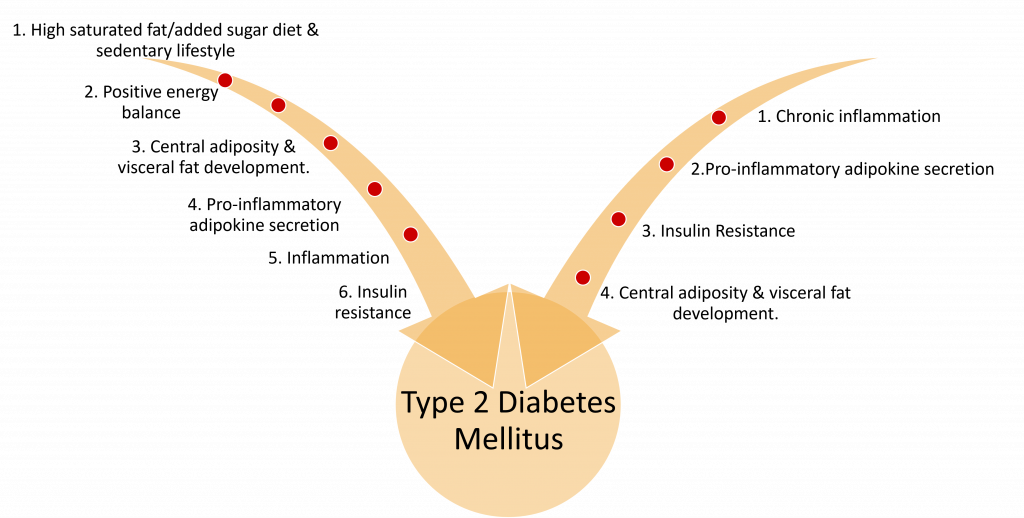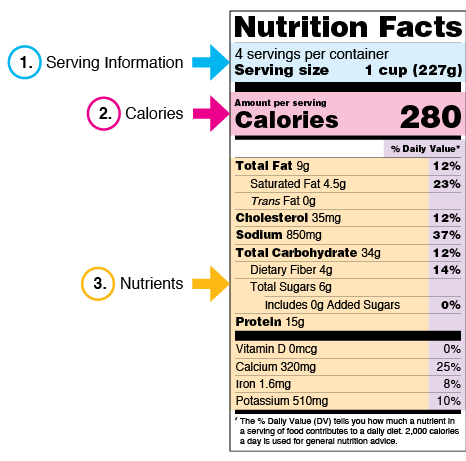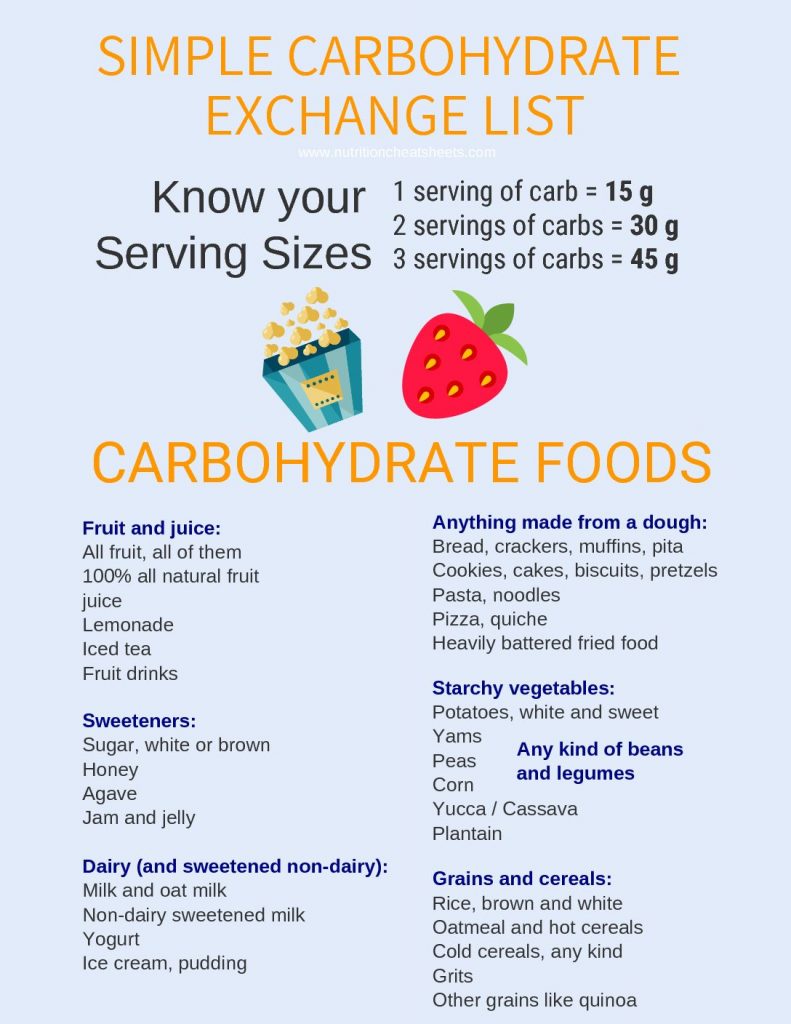This laboratory experience begins with your self-exploration of the virtual lab platform. Below, there is a series of interactive learning content to work through before beginning the lab. This pre-laboratory material works to both pull in concepts from the pre-health profession courses syllabus Food Busters is based off of, while also introducing new concepts the students can enrich their learning with. Concepts you will review on this lab webpage, prior to the lab procedure, include a diabetes overview, nutrition facts label overview, carbohydrate counting overview, and nutrition conversions overview. All the information you need for successful completion is located in this content. Happy learning!
Overview
Type 2 Diabetes Overview: Type 2 diabetes is a chronic disease which negatively impacts the levels of glucose traveling in the bloodstream (CDC, 2020). For a non-diabetic healthy person, when blood glucose increases after a meal, beta cells of the pancreas release the anabolic hormone insulin into the bloodstream (CDC, 2020). Once in the blood, insulin will travel and attach to cells of the body. This action “unlocks” the door for glucose to enter into the body’s cells, clearing glucose from the bloodstream and allowing the body to use this glucose for cellular metabolic function. This is not the case for someone with type 2 diabetes. A type 2 diabetics cells become what we call insulin resistant. This means when the beta cells of the pancreas release insulin, the cells of the body no longer respond to this hormone. Glucose therefore piles up in the bloodstream, leaving the cells of the body with less glucose to fuel metabolism. Overtime, because of this insulin resistance, the beta cells of the pancreas will end up secreting larger and larger amounts of insulin, in an effort to maintain blood glucose in a normal range. Eventually, overworked beta cells will no longer be able to maintain function and secrete insulin and glucose will overload the bloodstream.
Media 1: Video Clip Pathophysiology of Type 2 Diabetes
The development of type 2 diabetes relates to nutrition because it is essentially an energy imbalance that triggers the pathway leading to insulin resistance (Bruening & Burrell, 2021). Energy imbalances occur when a person consumes more energy than they expend (Bruening & Burrell, 2021). Typically, a diet high in saturated fats and added sugars and a lifestyle low in activity will lead to energy imbalance and a buildup of central adiposity. Central adiposity is the accumulation of fat in the mid-section of the body around the vital organs. Buildup of this visceral fat is dangerous because it secretes pro inflammatory adipokines, which are chemical messengers that signal inflammation in the body (Bruening & Burrell, 2021). Increased inflammation then triggers the insulin resistance that is seen in type 2 diabetics. This is a basic overview of the pathway that shows why nutrition plays such a large role in the prevention of type 2 diabetes. Students will need a basic understanding of this relationship for the completion of this lab. See above a quick video on the pathophysiology of type 2 diabetes.

Media 2: How Nutritional Factors Play a Role in the Development of Type 2 Diabetes
Nutrition Facts Label Overview: For completion of the laboratory procedure, students must be familiar with the nutrition facts label and understand how to interpret it. The United States Food and Drug Administration regulates food label operation, ensuring people have a way to make informed decisions regarding the food they eat (US Food and Drug Administration, 2020). The nutrition facts label contains information about a food’s serving size, calories per serving, and nutrient information such as added sugar and fat content (US Food and Drug Administration, 2020). In this laboratory procedure, students will be focusing on the grams of carbohydrate and total / added sugars information on the nutrition label, which can be found in the nutrients section alongside total fat, cholesterol, sodium, and protein (US Food and Drug Administration, 2020). Students will use their understanding of nutrition facts labels to analyze the carbohydrate and sugar content of items from their kitchen as part of the lab procedure. See the FDA’s Interactive Nutrition Facts Label to further understanding.
Media 3: What is on the Nutrition Facts Label?

Media 4: RDN speaks on the difference between Natural & Added Sugar
Carbohydrate Counting Overview: Carbohydrate counting is a way for diabetes patients to track the amount of carbohydrates they are consuming daily and at each meal (CDC, 2021). Typically, a diabetic patient will participate in Medical Nutrition Therapy. This is where they work alongside a registered dietitian nutritionist RDN to create a meal plan with a set amount of carbohydrate and learn how to accurately count their carbohydrates daily (CDC, 2021). This carbohydrate counting system is in place to maintain normoglycemia or a regular amount of glucose in the blood. There are 2 main parts to successful carbohydrate counting.
#1: Carbohydrate counting works by first knowing what foods contain carbohydrates (Academy of Nutrition and Dietetics & American Diabetes Association, 2014). Carbohydrate containing foods include starches, fruits & fruit juices, milk & yogurt, non-starchy vegetables, and sweets/desserts (Academy of Nutrition and Dietetics & American Diabetes Association, 2014).
Media 5: Carbohydrates Slider
#2: In addition to being able to identify carbohydrate sources, knowing how to measure the carbohydrate is the second key skill in carbohydrate counting (Academy of Nutrition and Dietetics & American Diabetes Association, 2014). Carbohydrates are measured in grams on the back of a nutrition label. One carbohydrate serving for a diabetic patient is equal to 15 grams of carbohydrate (Academy of Nutrition and Dietetics & American Diabetes Association, 2014). Registered Dietitians & Certified Diabetes Educators work closely with diabetic patients to create eating plans specific to their needs (Academy of Nutrition and Dietetics & American Diabetes Association, 2014). For example, a basic guideline for someone with diabetes might be to consume three carbohydrate servings per meal, which is equal to 45 grams of carbohydrate total.
Media 6: Carbohydrate Serving Size Guide

Nutrition Conversions Overview: Each macronutrient (carbohydrates, fat, protein) has a different conversion factor that dietitians use to convert from grams of food to calories of food. For this lab’s purposes, you will only be focusing on the conversion between grams of total sugar to calories and grams of added sugar to calories.
The conversion factor is 1 gram of carbohydrate “sugar” = 4 calories.
Example: Your nutrition label includes 15 grams added sugar and 20 grams total sugar. Convert these grams to calories.
15 grams added sugar * 4 calories per gram = 60 calories from added sugar
20 grams total sugar * 4 calories per gram = 80 calories from total sugar
Pre Lab Questionnaire and Experiment #1 Worksheet/Lab Data Sheet
Carbohydrate-Counting-and-Diabetes-Lab-Data-Sheet-1-v.1.0-White-2.22.22Download
Questionnaire Link Here (PDF Version)




